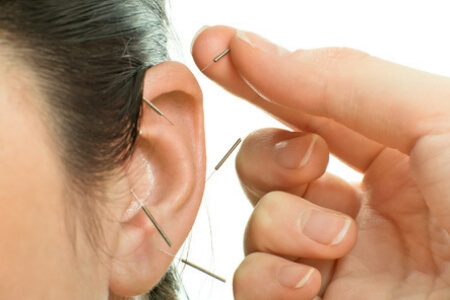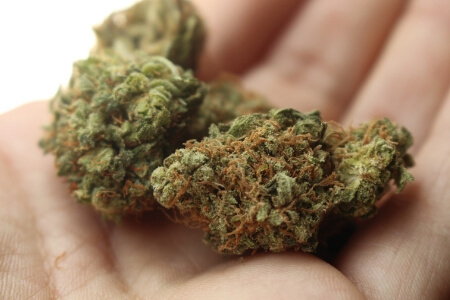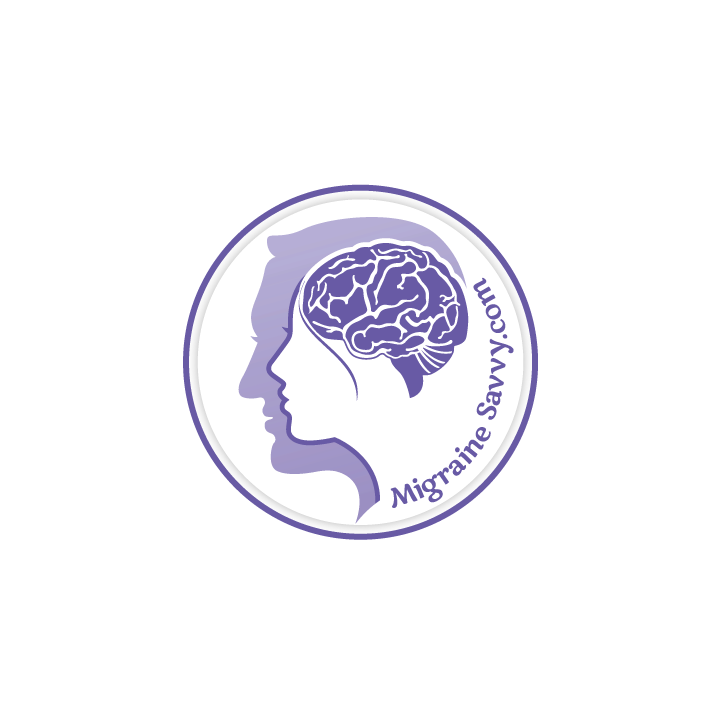- Home
- Alternative Treatments
- Feverfew for Migraines
GET THE BEST MAGNESIUM!
My #1. Magnesium Breakthrough by BiOptimizers – combines 7 types of magnesium in a humic/fulvic monoatomic blend to optimize absorption. This is by far the best product I have found so far in terms of results.
Feverfew for Migraines
Will It Stop Your Painful Attacks?
Feverfew for migraines has been compared to aspirin and might just be the thing that works to help you reduce, manage or even eliminate your chronic migraine attacks. It has proven to be very effective for lots of migraine sufferers already.
However, my personal experience is that effective natural pain relief for more severe migraines can be much more difficult to find. Impossible even.
So let me ask you...
Do you suffer from debilitating chronic or periodic migraine headache attacks and are looking for headache relief that doesn’t get made in a drug lab using synthetic who knows what?
Have you already experienced ineffective medications with breakthrough pain and side effects that are more troublesome than they are worth?
And ironically enough, the meds have side effects listed for causing headaches.
I don't really want to mention weight gain as yet another detrimental side effect, in case I sound superficial which I am not. But who wants that added to the mix with other troublesome side effects.
These are also listed as side effects from Feverfew, and there are a few very important cautions highlighted below.
I have never found aspirin to work with my severe migraines, but I think feverfew for migraines is worth a try for sure.
Will it stop your painful attacks? It really could... let me tell you why...
Proof Of Fewer Migraines With Feverfew
 Natural Pain Relief That Works
Natural Pain Relief That WorksNumerous migraine sufferers have already found effective pain relief from Feverfew (Tanacetum parthenium), a common flower native to South Eastern Europe and is now common to North America and Australia.
Feverfew has a long history and has been used for centuries to help lower the frequency and calm the severity of symptoms associated with migraine headaches.
Medical
texts going as far back as Ancient Rome used dried and crushed feverfew
leaves to help manage fever and as a painkiller for headaches. Ancient
Greek physicians used Feverfew to treat melancholy and the English
continued to use it to treat depression, headache, vertigo, and to reduce high fevers.
Clinical tests have proven feverfew to be more effective than other non-steroidal anti-inflammatories like aspirin.
There have been numerous clinical trials, all in the past decade, that have proven Feverfew, taken two to three times a day, to reduce the frequency of migraine episodes by up to 50% for some sufferers.
Several study participants who experienced chronic daily headaches (CDH) plus migraine episodes reported that their daily headaches stopped completely after four weeks of taking feverfew.
Feverfew for migraines is best used as a preventative.
What Are The Side Effects of Feverfew?
Feverfew, while helpful to many, has a significant amount of potential side effects. Few people experience them, but they can be serious.
If you want to add Feverfew to your migraine prevention regimen, please consult with your doctor and even a licensed herbalist if you can. Your local pharmacist is a good person to double check this with as well.
"Feverfew was shown to reduce the severity and frequency of migraines. This herb should not, however, be used during pregnancy or by people taking blood-thinning medications." (Rowland and Frey, Gale Group, 2009).
Side effects might include: upset stomach, heartburn, diarrhea, constipation, bloating, flatulence, nausea, and vomiting. Other less common reported side effects include: nervousness, dizziness, headache, trouble sleeping, joint stiffness, tiredness, menstrual changes, rash, pounding heart, and weight gain.
This is not an exhaustive list... you may have others.
Feverfew can trigger an allergic reaction in patients with common pollen allergies and should be used with caution.
And as with any herb, there can be drug interactions you need to know about. Click here to check any medications you are on... and ask your doctor first.
You Can Chew Leaves, Drink the Tea, Take Tablets And...
 Feverfew Tincture, Tea or Tablets
Feverfew Tincture, Tea or TabletsFeverfew plants remind me of daisies. They have flat yellow centers with slender white petals on lightly furred stems and small yellow-green leaves.
Feverfew for migraines is available in many forms: tea, tablet, capsule, and tincture forms.
You can grow the plant at home and chew the leaves. Two to three leaves each day is recommended.
You can brew some tea or see a herbalist to mix you up a tincture.
Just another warning: Feverfew in any form can cause mouth ulcers, but they are most common among those that chew the leaves or drink the tea. If mouth sores develop, discontinue use immediately.
How Feverfew for Migraines Actually Works
Feverfew for migraines works because it has anti-inflammatory and vasodilatory properties.
I am not a herbalist, so I thought it might be best to quote one:
"It is the combination of ingredients in the feverfew plant that brings such effective relief. It works to inhibit the release of two inflammatory substances, serotonin and prostaglandins, both believed to contribute to the onset of migraines."
"By inhibiting these amines as well as the production of the chemical histamine, the herb controls inflammation that constricts the blood vessels in the head, and prevents blood vessel spasms which may contribute to headaches" (www.herbmed.org).
It contains 85% of a compound called parthenolide. Parthenolide helps prevent excessive clumping of platelets and inhibits the release of certain chemicals, including serotonin and some inflammatory mediators.
Several double blind studies report beneficial side effects from regular use:
- reducing severity, duration and frequency of migraines
- reduces nausea and vomiting
- relief from depression
- relief from arthritic pain
- relief from painful and sluggish menstrual flow
Straight from the MigraCaps information:
"Many studies have found Feverfew administration to result in a reduction in the severity of symptoms associated with migraine, as compared to placebo. The mode of action of Feverfew may involve the inhibition of platelet aggregation and prostaglandin synthesis."
"Feverfew has anti-inflammatory and vasodilatory properties that may work to reduce blood vessel spasms and inhibit the release of inflammatory substances. Feverfew may benefit many conditions involving inflammation."
Migraines involve inflammation.
A Few Quick Q & A's
Is feverfew good for migraines?
It has been compared to aspirin and might just be your solution. Feverfew contains parthenolide, which can ease muscle spasms, reduce inflammation, and prevent the constriction of blood vessels in the brain.
How much feverfew should I take for migraines?
For migraine headaches: Take 100–300 mg, up to 4 times daily, standardized to contain 0.2–0.4% parthenolides. Feverfew may be used to prevent or to stop a migraine headache. Feverfew supplements may also be CO2 extracted. For these, take 6.25 mg, 3 times daily, for up to 16 weeks. [5]
What are the benefits of feverfew?
Feverfew has long been used as an herbal remedy in European folk medicine. Feverfew contains a compound called parthenolide, which may help to ease muscle spasms, reduce inflammation, and prevent the constriction of blood vessels in the brain.
Is it safe to take feverfew every day?
Each supplement will have a different recommended dose so be careful. Having said that, studies find that taking from 100 - 300 mg of a feverfew supplement containing 0.2 - 0.4% standardized parthenolide 1 to 4 times a day is safe to treat migraine headaches. BUT feverfew is unsuitable for some people and those taking certain medications and has side effects. So check with your doctor before taking this supplement. [4]
 Where to start with Feverfew for migraines
Where to start with Feverfew for migrainesThings You Can Do Now
I think taking feverfew for migraines is definitely worth a try. Sadly I had an allergic reaction to it, but this herb has a lot of research behind it. So ask your doctor and see what s/he says.
Here are a few things you can do to get started on your new experiment:
- Check with your doctor to see if s/he thinks feverfew will interact with anything else you are taking and what they think in general about you using this herb. You might also want to ask if they've had any previous patients that have had success reducing their migraines using Feverfew.
- Print out my Medication Tracker and record your start date and dose. Click here to download it now.
- Keep a Migraine Diary to record your daily results. Click here to download the calendar. This is essential to track and monitor your migraine attacks and to find out what's working.
- Take the herb for 2 months, as long as you have no bad reactions to it. You need to give it time to work. Be patient! It can take up to 4 to 8 weeks to notice any beneficial effects or reduction in your migraines from natural supplements or remedies.
- Monitor and check your results with your doctor. You might see a significant reduction in frequency, severity or duration in your migraines, so keep him/her posted.
You might also like to read my article on migraine supplements to be even more proactive in your own migraine treatment regimen.
I'd love you to stay in touch, so join the mailing list and get 5 things you can use right now to help you monitor and cope with your attacks.
And don't worry -- your e-mail address is totally secure. I promise to use it only to send you my newsletter.
Until next time, be well and be pain free,
Holly
WANT MORE TIPS? Subscribe to my newsletter and follow along on Facebook and Pinterest for all of the latest updates.
ALTERNATIVE MIGRAINE TREATMENTS Related Articles
How to be more migraine savvy right now...
Feverfew for Migraines References:
1. PubMed.gov (2005) Study Showing the effectiveness of Feverfew. Available [Online] at http://www.ncbi.nlm.nih.gov/pubmed/16232154 accessed Jan 4, 2016 relating to the proper reference: Diener HC, Pfaffenrath V, Schnitker J, Friede M, Henneicke-von Zepelin HH. Efficacy and safety of 6.25 mg t.i.d. feverfew CO2-extract (MIG-99) in migraine prevention--a randomized, double-blind, multicentre, placebo-controlled study. Cephalalgia. 2005 Nov;25(11):1031-41.
2. Rowland, B., Frey R. PhD and Newton, D.E., Ed.D. (2014) Migraine headache. The Gale Encyclopedia of Alternative Medicine. Ed. Laurie Fundukian. 4th ed. Detroit: Gale, 2014. 4 vols. Available here.
3. Herb Med.org
4. Healthline (2020) What Is Feverfew, and Does It Work for Migraines? Available [online] at: https://www.healthline.com/nutrition/feverfew
5. PubMed (2011) Feverfew (Tanacetum parthenium L.): A systematic review. Available [online] at: https://www.ncbi.nlm.nih.gov/pmc/articles/PMC3210009/
















